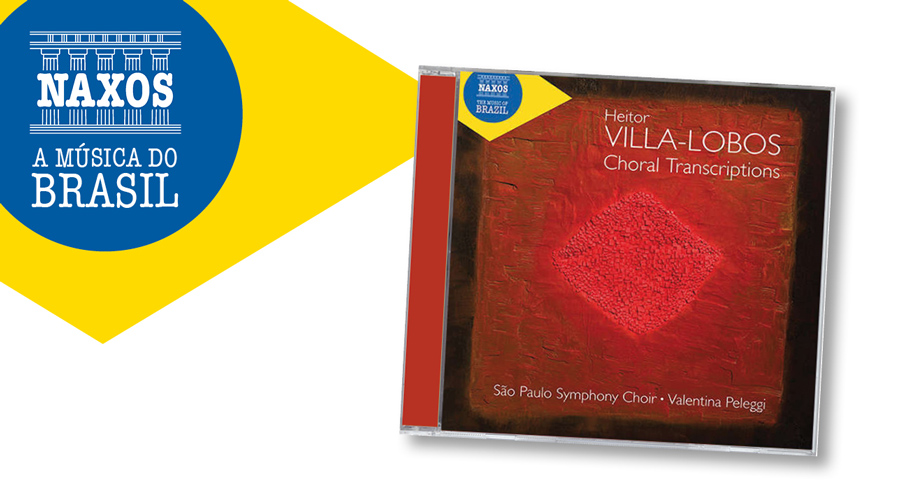
Villa-Lobos: Transcrições para coro
Coro da Osesp
Valentina Peleggi – regente
Sexto volume da coleção Música do Brasil, do selo Naxos, Transcrições para coro é um disco histórico. Em diversos sentidos. Primeiro, porque registra o trabalho do Coro da Osesp. Em segundo lugar por trazer uma série de primeiras gravações mundiais. E, por fim, pelo olhar que oferece da obra de Villa-Lobos. O compositor sempre entendeu a música coral como um instrumento fundamental a ser usado na formação musical – prova disso foi o projeto do Canto Orfeônico desenvolvido durante o Estado Novo. Mas, o que cantar? Além de escrever diversas peças originais para coro, Villa-Lobos também fez transcrições de uma série de peças do chamado repertório tradicional. É o caso de passagens das Canções sem palavras, de Mendelssohn; de Träumerei, de Schumann; de Ständchen, de Schubert; de valsas de Chopin; prelúdios de Rachmaninov; da Elégie, de Massenet; ou do segundo movimento da Sonata patética, de Beethoven. E esses são apenas alguns dos principais destaques de um álbum marcante, que conta com a regência precisa da maestrina italiana Valentina Peleggi. CD importado.
Clique AQUI para comprar na Loja CLÁSSICOS
Clique AQUI para ouvir no Spotify
TEXTO DO ENCARTE
Heitor Villa-Lobos (1887–1959)
Choral Transcriptions
'Orchestrating' for Voices
Choral music holds a central position in Villa-Lobos's catalogue, ranging from the monumental 'sound landscapes' of Descobrimento do Brasil and Choros No. 10, to the miniatures of the Guia Prático collection, written for children in elementary school.
From this vast output, a remarkable place is occupied by a set of less well-known transcriptions for a cappella choir, taken from the standard repertoire of classical music: Handel, Rameau, Haydn, Mozart, Beethoven, Schubert, Mendelssohn, Schumann, Chopin, Massenet and Rachmaninov, but above all Preludes and Fugues from Bach's The Well-Tempered Clavier. These transcriptions – many of which have been recorded here for the first time – were written and premiered in Rio de Janeiro between 1933 and 1935. They were originally intended for the choir of the Orfeão dos Professores ('Teachers' Chorus'), for whom Villa-Lobos would also compose an impressive set of often virtuosic folklore arrangements, and whose activities spread over two decades, in concert halls, schools and public places.
In 1932, Villa-Lobos had been invited by Anísio Teixeira (the leading Brazilian figure of that generation in the field of education) to set up an ambitious programme of music education in the public school system of the city of Rio de Janeiro. Besides the logistical challenge, such a task also called for a radical rethink of the learning materials to be made available to schools. It is therefore remarkable that during the four years between 1932 and 1936 Villa-Lobos would interrupt a highly successful compositional career, with numerous internationally acclaimed works behind him, such as Amazonas, Choros No. 10 and Rudepoema, in order to dedicate himself to the 'humbler' task of creating new pedagogical materials that would cater for both students and teachers. Alongside the works of Kodály and Orff, the result was one of the most successful examples of Gebrauchsmusik in 20th-century music: Coleção Escolar, designed for students in elementary and secondary schools, and complemented by the Coleção do Orfeão dos Professores, which provided a fresh new a cappella repertoire for adult groups, and teachers' choirs too.
It is from this corpus of very well-known pieces, mostly from the keyboard repertoire, and ranging from Bach to Romanticism, that a large number of transcriptions have been selected for this album. A number of features, which they share, are immediately apparent:
– the need for rather large ensembles, with frequent use of divisi (the division of a section into two or more voices), and especially with the insertion of the intermediate registers of mezzo-soprano and baritone within the standard SATB (soprano, alto, tenor and bass) structure: soprano / mezzo-soprano / alto / tenor / baritone / bass (with divisi);
– the need for rather large ensembles, with frequent use of divisi (the division of a section into two or more voices), and especially with the insertion of the intermediate registers of mezzo-soprano and baritone within the standard SATB (soprano, alto, tenor and bass) structure: soprano / mezzo-soprano / alto / tenor / baritone / bass (with divisi);
– while the musical texts themselves are scrupulously respected, most of them appear transposed from their original keys (even in the case of The Well-Tempered Clavier's Preludes and Fugues).
The Romantic Repertoire
Robert Schumann's Träumerei (1838), the seventh piece from the piano collection Kinderszenen, is here transcribed for 'Coro mixto a 6 vozes', while Felix Mendelssohn's Lieder ohne Worte No. 9 in E major (1834) is written as a four-part German chorale (transposed from E flat to E major).
Franz Schubert's Ständchen (1828), on a poem by Ludwig Rellstab (translated into Brazilian Portuguese by Arthur Nestrovski), comes from the Schwanengesang song cycle. Jules Massenet's Élégie (c. 1872), with lyrics by Louis Gallet, is also transcribed for six voices, but with solutions which differ from those in Ständchen: while in the Schubert piece Villa-Lobos makes the melodic line circulate along the different registers, in Massenet's it is the soprano (sometimes doubled by the tenor) who 'reigns supreme'.
Fryderyk Chopin's Waltz No. 7 in C sharp minor (1847) (here transcribed into B minor) and Sergey Rachmaninov's Prélude in C sharp minor (1892) (here lowered to C minor) are among the greatest tours de force in the entire collection, as a result of the 'orchestration' obtained by playing with contrasting syllables, and through achieving such a convincing vocal rendering for piano pieces which could not be more idiomatic than they are.
Ludwig van Beethoven's second movement from the 'Pathétique' Sonata (1798), here arranged for four voices (transcribed into D major from A major), is a rare example, in the entire collection, of a partial transcription (the first 16 bars).
Bach's The Well-Tempered Clavier
The large presence of The Well-Tempered Clavier in the collection is a reflection of Bach's predominant place as a source of inspiration for Villa-Lobos, from his earliest childhood memories to the completion in the 1940s of his world famous series of nine Bachianas Brasileiras.
Each of those Preludes and Fugues (with the one exception of Prelude and Fugue No. 8) is presented as an 'autonomous' piece, neither paired, nor in the original keys. It is interesting to note that, in 1941, Villa-Lobos would also transcribe all these pieces for an ensemble of eight cellos, just like Bachianas Nos. 1 and 5.
The Preludes chosen by Villa-Lobos – all of them in a minor key – are among the most stunningly expressive of the whole collection: Preludes Nos. 8 (E flat minor) and 22 (B flat minor), both transcribed for six voices (and transposed, respectively, to D minor and G minor), belong, as Cecil Gray puts it, to 'the atmosphere of the Passions', while the three-part Prelude No. 14 (F sharp minor, transposed to F minor), in three voices – a long 'arioso' almost in the form of a pre-Classical sonata movement – is made to conform to the SATB pattern. Interestingly, both Preludes Nos. 8 and 14 were often included by Villa-Lobos in his own concerts as a soloist, in a previous transcription for cello and piano.
Contrasting with the lighter mood of Fugue No. 21 (B flat major), Fugues Nos. 1 (C major), 8 (E flat minor) and 5 (D major) are among the densest in the whole of The Well-Tempered Clavier, in terms of imitative counterpoint. In his classic edition of the work, Ferruccio Busoni declares Fugues Nos. 1 and 8 to be 'unmistakably' the culmination of Book 1 in terms of musical architecture, while Hugo Riemann identifies these three fugues as a nec plus ultra in virtuoso writing of stretti (four in Fugue No. 1, six in Fugue No. 5, and ten in Fugue No. 8 – the stretto technique consists on the immediate repetition of a melodic pattern of a voice by another voice). In their analysis of these transcriptions, Suzana Igayara, and Marco Antonio da Silva Ramos have shown that, if on the one hand Villa-Lobos's point of departure was the Bruno Mugellini edition (1908), on the other he introduced a number of solutions (with respect to dynamics and balance between voices), which differ from this standard edition, and reflect his personal views with respect to the interpretation of those works.
Bachianas Brasileiras No. 9
This is the last piece in the famous cycle of chamber and orchestral works composed by Villa-Lobos between 1931 and 1945, based on the affinities he identified between Bach and Brazilian folklore. There are two versions of the piece: the widely recorded version for string orchestra, premiered in 1948 by Eleazar de Carvalho, to whom it was dedicated; and the a cappella version, only premiered in the 1970s by Nelson de Macedo, and dedicated to Aaron Copland.
The Baroque element is already evoked in the titles of the two movements (Prelude and Fugue), while the Fugue, certainly not a conventional one, presents a number of 'Bachian' features – a majestic six-voice exposition in invertible counterpoint, followed by divertimentos that develop elements from both subject and countersubject, the whole alternating with a free section in 'chorale form'. According to the composer's notes, alongside the 'ambience and musical atmosphere of Bach's rigorous style' he also intended to evoke the 'singular and irregular rhythmic and accentuation patterns' he had heard among Indigenous Brazilians. It is this intention of effecting a synthesis between extremely diverse sources that explains the extraordinarily suggestive four-bar long subject chosen for this Fugue. It very successfully combines the sharpness of the anapest pattern (short – short – long) with the softer 'Brazilian' syncopation, the whole within an angular 11/8 (5/8 plus 6/8) time signature.
Not often heard, this version of Bachianas Brasileiras No. 9 is a fitting complement to those a cappella transcriptions, written ten years earlier, as Villa-Lobos's first experiments with his concept of 'orquestra de vozes'.
This album is the first recording of the complete set of Villa-Lobos's a cappella transcriptions of Preludes (three) and Fugues (four) from The Well-Tempered Clavier, and it also represents a first attempt to incorporate a significant number of other classical works belonging to the didactic repertoire of Orfeão dos Professores.
In order to meet this challenge, which required both persistent research and the availability of a virtuoso choir, conductor Valentina Peleggi dedicated two years to intensive research and detailed revision of the scores, so as to revive these transcriptions from almost a century ago, and – while remaining close to the spirit of the original texts – to render as faithfully as possible Villa-Lobos's intentions when 'orchestrating for voices'.
Manoel Corrêa do Lago
Manoel Corrêa do Lago is the author of texts on the musical language of the 20th century, with special emphasis on Brazilian modernism and the work of Heitor Villa-Lobos. He occupies Chair No. 15 ('Carlos Gomes') in the Brazilian Academy of Music.
![[Reprodução]](/sites/default/files/inline-images/fundo_villatransc_0.jpg)
Críticas internacionais
David Hurwitz
ClassicsToday.com, January 2021
Unbelievable Villa-Lobos Choral Transcriptions
The Bottom Line: Don’t miss this disc! These transcriptions for unaccompanied choir of keyboard music by Bach, Mendelssohn, Beethoven, Schumann, Massenet, Chopin, Rachmaninoff and Villa-Lobos himself have to be heard to be believed. They are extraordinary. Check out the sound samples in the video and add this splendid Naxos release from the São Paulo Symphony Choir under Valentina Peleggi to your collection post haste. Watch complete review © 2021 ClassicsToday.com
David Denton
David's Review Corner, January 2021
Among the vast number of compositions created by Heitor Villa-Lobos there is a sizeable quantity of choral music including arrangements he made for school use.
They were for an unaccompanied groups, mostly four part mixed male and female choirs, and were created from works by famous composers, often originally for the keyboard. The objective being to have voices taking the different strands that formed the original work, so that you have an ‘orchestra’ of voices. That would teach young people how to vocalize and to employ part-singing. It was a project so close to the heart of the Brazilian composer, that he set aside major compositional projects in order to meet this task that formed part of a four year period from 1932 to 1936. The whole idea then grew to have the works as a useful part of developing mature choral groups. Some of the original pieces he used were well-known and retained their attraction, while there are others, such as Bach’s Fugues, where the fast-moving originals would prove a challenge. Some tracks have words, including Schubert’s Standchen and Massenet’s Elegie, but it is a disc largely of sounds. It ends with a rare performance of the vocal version of Villa-Lobos Ninth Bachianas Brasileiras, already well-known in its string orchestra garb. Performed by the Sao Paulo Symphony Choir, a relatively recent major adjunct to music in the city, I hope teachers will buy and listen to the disc and use the whole concept in their schools. © 2021 David's Review Corner
É preciso estar logado para comentar. Clique aqui para fazer seu login gratuito.



![O pianista Pablo Rossi [Divulgação] O pianista Pablo Rossi [Divulgação]](/sites/default/files/styles/menu_preview/public/w-pablo-rossi_0.jpg?itok=MZVe60RE)
![A Sinfônica Heliópolis no Theatro Municipal de São Paulo [Divulgação/Georgia Leopoldi] A Sinfônica Heliópolis no Theatro Municipal de São Paulo [Divulgação/Georgia Leopoldi]](/sites/default/files/styles/menu_preview/public/w-OrquestrasDeHeliopolis-Credito_GeorgiaLeopoldi.jpg?itok=WHQQbYb1)
![O atua regente titular da OER, Wagner Polistchuk, em concerto com o grupo [Divulgação/Rafael Salvador] O atua regente titular da OER, Wagner Polistchuk, em concerto com o grupo [Divulgação/Rafael Salvador]](/sites/default/files/styles/menu_preview/public/w-oer-Rafael-Salvador_CR7_9255.jpg?itok=dnWUXr1X)
![O maestro Julian Kuerti durante concerto com a Opes em 2024 [Divulgação/Daniel Ebendinger] O maestro Julian Kuerti durante concerto com a Opes em 2024 [Divulgação/Daniel Ebendinger]](/sites/default/files/styles/menu_preview/public/w-20240831-opes-tmrj-202-foto-daniel-ebendinger.jpg?itok=fIvESFcO)
![Karin Uzun, Fernando Portari, Fulvio Souza e Cinthia Cunha em cena do espetáculo [Divulgação] Karin Uzun, Fernando Portari, Fulvio Souza e Cinthia Cunha em cena do espetáculo [Divulgação]](/sites/default/files/styles/menu_preview/public/w-navalha_0.jpeg?itok=D9JzSjqK)
![A pianista Yuja Wang durante concerto no Teatro Cultura Artística [Divulgação/TCA] A pianista Yuja Wang durante concerto no Teatro Cultura Artística [Divulgação/TCA]](/sites/default/files/styles/menu_preview/public/w-yuja_tca.jpeg?itok=_TXif-jn)
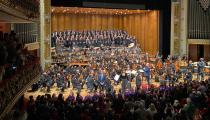
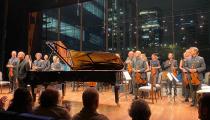
![O violonista João Luiz [Divulgação/Sarah Blesener] O violonista João Luiz [Divulgação/Sarah Blesener]](/sites/default/files/styles/menu_preview/public/w-joao_luiz.jpg?itok=raioF2-3)
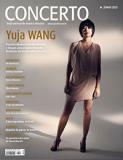

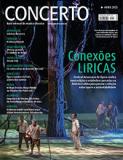
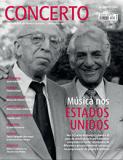
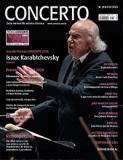
Comentários
Os comentários são de responsabilidade de seus autores e não refletem a opinião da Revista CONCERTO.